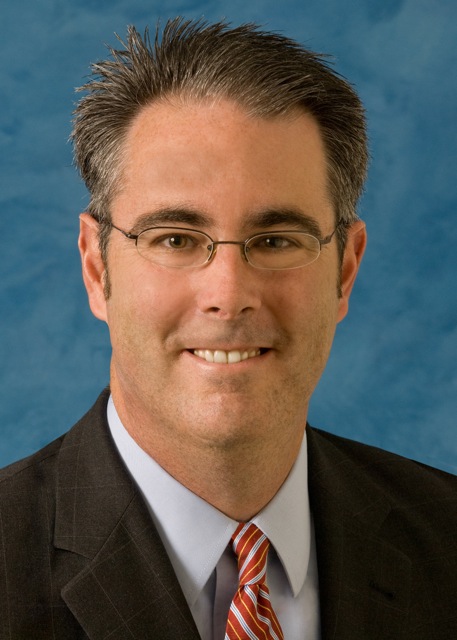 John Bartos, CEO of Collect Rx, presented a webinar titled "Debunking the Myths of Out-of-Network Reimbursement." During the presentation, Mr. Bartos spoke about the payor approach to reducing out-of-network reimbursements, opportunities for ambulatory surgery centers to continue with out-of-network and the five biggest myths about OON.
John Bartos, CEO of Collect Rx, presented a webinar titled "Debunking the Myths of Out-of-Network Reimbursement." During the presentation, Mr. Bartos spoke about the payor approach to reducing out-of-network reimbursements, opportunities for ambulatory surgery centers to continue with out-of-network and the five biggest myths about OON. Here are the five myths Mr. Bartos discussed:
Myth #1: The days of OON are over
Many in the industry believe OON isn't a viable strategy today because insurance companies have taken steps to make going out-of-network difficult. However, Mr. Bartos says even with increased patient responsibility, higher deductible copays and limited benefit insurance there are opportunities to improve reimbursement.
"There is still $60 billion of out-of-network claims processed each year," says Mr. Bartos. "That's a lot of dollars for a key segment people say is going away."
Additional market trends such as PPO enrollment, which has grown rapidly as HMO enrollment declined, will drive more patients to pursue OON opportunities. "People want to have OON benefits and they are willing to pay for it," he says. "At the end of the day the only choice payors have is to offer OON benefits. It's our view at Collect Rx that out-of-network is not going away."
Myth #2: Being 100 percent in-network maximizes reimbursement
Some surgery centers believe that being 100 percent in-network is the way to obtain the highest level of reimbursements. However, Mr. Bartos says the proper expertise and OON strategy execution could actually increase overall reimbursement. "A hybrid out of network and in-network strategy is ideal," he says. "There is an opportunity to significantly increase payment on the out-of-network bill even if it's a small part of your business."
Depending on the marketplace, surgery centers can maximize revenue with the hybrid model. Decide which payors to pursue an OON strategy with based on the reimbursement levels compared to projected reimbursement levels if the ASC was in-network with the payor.
"For providers that are 100 percent in-network, you should take a gradual approach to beginning an OON strategy. It's best to dip your toe in the water," says Mr. Bartos. "Pick a payor where the volume is low to begin going out-of-network and see how that goes before expanding."
Myth #3: We've got it covered
Surgery center administrators might think their OON strategy is covered by their billing company or another third party handling the ASC's revenue cycle. Others think entering into a third party rental agreement or a continuous discount agreement with the negotiation companies will cover them.
"Billing companies specialize in medical billing, and with out-of-network we are talking about something different," says Mr. Bartos. "We recommend you ask the billing company about their results when they're dealing with OON negotiation requests and when they're appealing OON denials and under-payments.”
Also be aware of Silent PPO agreements and continuous discount agreements because they frequently contain onerous provisions. If you currently have these contracts, you should examine them carefully and determine whether it makes sense to cancel or renegotiate them.
Myth #4: I don't have enough OON patients to justify this strategy
Even a small percentage of cases can make a big difference to the ASC's revenue. Mr. Bartos' strategies can increase out-of-network reimbursements by 33 percent. For surgery centers with $5 million in revenue and 15 percent of that revenue from OON patients, a 33 percent increase equals a $250,000 in increase reimbursements. All of this $250,000 goes directly to the bottom-line.
Myth 5: Outsourcing doesn't make sense
Administrators are always on the look out to cut costs at ASCs, but there are some functions they won't be able to optimize unless they enlist the help of experts. Trying to go out-of-network without the appropriate background and training would be like defending yourself in a court of law without a lawyer, says Mr. Bartos. "A person can do it alone, but is that really their best chance of being successful?"
He recommends administrators ask these questions before deciding whether to outsource OON revenue enhancement:
• Do you have the expertise?
• Do you have the resources?
• Do you have local and statewide data detailing OON payments for all ASCs and all major payors?
• How does the outsourced vendor charge for their services?
• What are the upfront costs? Are there ongoing minimums?
• Does it make financial sense?
View or download the Webinar by clicking here (wmv). We suggest you download the video to your computer before viewing to ensure better quality. If you have problems viewing the video, which is in Windows Media Video format, you can use a program like VLC media player, free for download by clicking here.
Download a copy of the presentation by clicking here.
More Articles on Surgery Centers:
6 Quick Strategies to Keep ASC Costs Low
5 Ways to Cap Anesthesia Costs in ASCs
5 Reasons to Conduct Regular ASC Valuations

